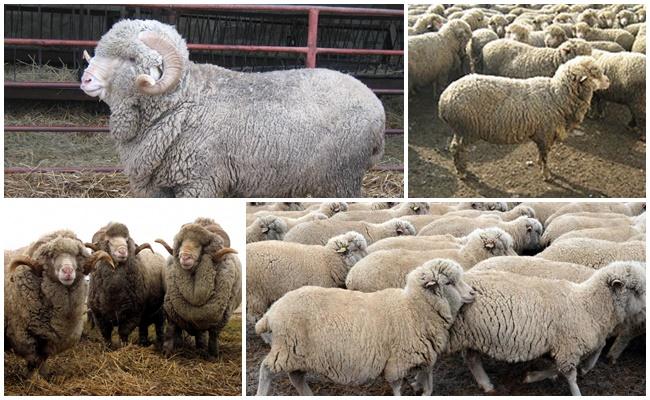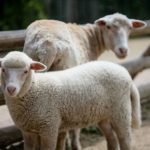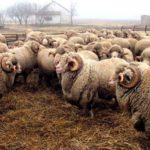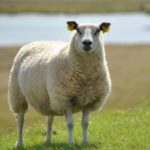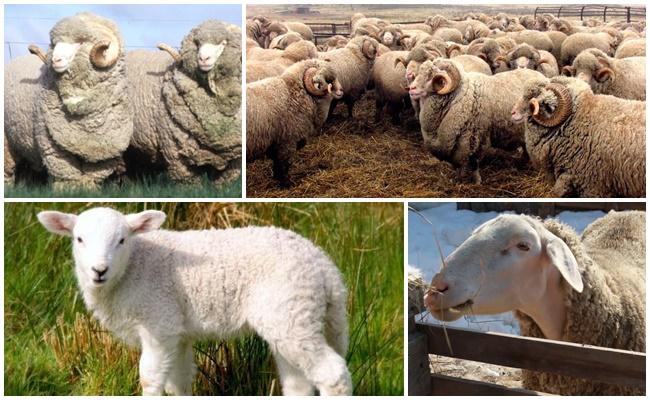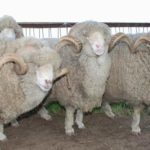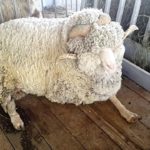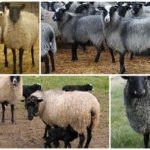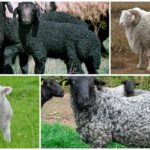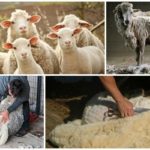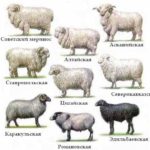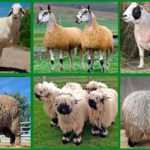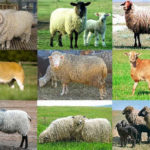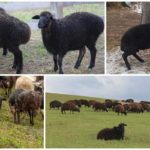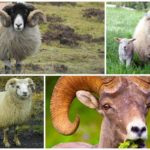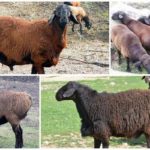The flock on a subsidiary farm is wool, meat, and milk. The animals are unpretentious and quickly gain weight. That is why they have existed next to humans for centuries. People are breeding new breeds, trying to make animals large, resistant to diseases, and easy to keep. Sheep of the Askanian breed, which are kept on small private farmsteads and large farms, meet all these criteria.
History of the breed
Work on breeding Askania fine-wool sheep has been carried out since 1925 in the Ukrainian reserve Askania-Nova.It was decided to cross local Merino sheep with American Ramboulier sheep. As a result, it was planned to obtain large animals with high-quality wool. By 1935, a new wool-meat breed had appeared, perfectly adapted to being kept in local conditions. The Askani breed is widespread in the southern regions of Russia and throughout Ukraine.
Description and characteristics of the Ascanian sheep
The animals are large, with white or yellowish fur, pronounced fleshiness. There are 1-2 folds on the neck. Grease can be white, yellowish or beige in color. It protects wool from dirt and high humidity.
Sheep of the Askanian breed belong to the meat and wool type of animals. They have the following characteristics:
- developed muscle mass;
- strong bones;
- sheep weighing up to 60-65 kilograms, rams - up to 110-115 kilograms;
- height at the withers up to 65-70 centimeters for sheep and 80-85 centimeters for rams;
- the absence of horns in sheep and their presence in rams;
- the presence of white dense wool up to 10-11 centimeters long in males and 8-9 centimeters in ewes.
Rams of the Askanian breed can produce up to 20 kg of wool per year. It covers not only the back and sides, but also the stomach and legs of animals. Wool sheared from ewes is of better quality, but there is less of it, up to 8 kilograms. The animals grow quickly, the sheep have high fertility, they produce 2 lambs per lamb. The first lambing is characterized by the appearance of 1 lamb.
Representatives of this breed perfectly convey their own hereditary qualities when crossed. This is why there are so many intrabreed types of Ascanian sheep.
Positive and negative sides
The breed has been around for over 80 years and remains popular. Sheep are kept on small farms and are also raised on an industrial scale. The advantages of the breed are:
- Size. These are the largest merino sheep.
- The quantity and taste of the meat obtained. Some individuals reach a weight of 150 kilograms, the meat is without a specific odor with a small amount of fat.
- The ability to transmit the hereditary characteristics of the breed. Its representatives are used to improve livestock.
- Quality and volume of wool produced.
- Good fertility of ewes and rapid growth of lambs. Yarka gains the weight of an adult sheep in 18 months.
Lamb meat is tender, odorless and dietary. Wool is used in textile production. The breed has few disadvantages:
- grease stands out slightly;
- the fur becomes very dirty on the back;
- The length of the coat varies in different areas.
Since there are significantly more advantages, the breed is kept in Russia and Ukraine, and is often used to improve the characteristics of the existing livestock. The meat is suitable for feeding elderly and frail people and has excellent taste.
Rules of maintenance and care
Animals are unpretentious in food. In the summer they are grazed; during cold weather it is necessary to equip a sheepfold. The floors are made level and the bedding is changed periodically. Lighting is provided in the sheepfold. Drafts and crowded conditions are harmful to animals; the temperature in the sheepfold should be 6-8 °C. Fresh water is required.
Feed 3-4 times a day. Give water after feeding. Be sure to give salt, it is placed next to the drinking bowl. It normalizes digestion. It is necessary to inspect the livestock, check the condition of the coat and hooves.Hooves must be trimmed periodically to prevent the occurrence of hoof rot. The flock is sheared in the spring, when the temperature rises to 18-22 °C. Cut with sharp scissors or electric clippers. You should cut carefully so as not to injure the animal. Wounds and scratches are disinfected after haircuts.
What to feed
In summer, the main source of nutrition for the herd is succulent feed. Before pasture, you should inspect the pasture; there should be no henbane, datura, celandine, or milkweed on it.
Young tree branches are useful for them. They produce apple, pear, willow, alder and poplar branches. In winter, animals are fed hay, silage, and root vegetables. Breeding rams are provided with hay, mixed feed and vitamins.
Breeding Ascanian sheep
After 1935, work to improve the breed continued, the task was set to improve the quality of wool and clipping from each head. From 1959 to 2000, several intrabreed types with crossbred wool were developed, which are used to produce fabrics and knitwear. For example, Tauride merino, Askanian blackhead type sheep, Dnepropetrovsk meat and wool sheep. Today in Ukraine there are several breeding farms specializing in breeding Ascanian sheep.
Frequent illnesses
They are conventionally divided into 3 groups: non-infectious, helminthic infestations, infectious diseases. When fed improperly, sheep experience rumen flatulence. Animals can be poisoned by poisonous plants in the pasture. Pneumonia develops when kept in a cold and damp room, or untimely haircuts. Animals must be dewormed. They do this quarterly.
Infectious diseases include: listeriosis, smallpox, bradzot, foot and mouth disease. To treat animals, you need to call a veterinarian, the sick sheep is separated from the flock. Most infectious diseases require quarantine.
Sheep farming is a profitable business. Pedigree animals on the farm allow you to quickly recoup costs and start making long-awaited profits; the Askanian breed remains one of the most popular.

